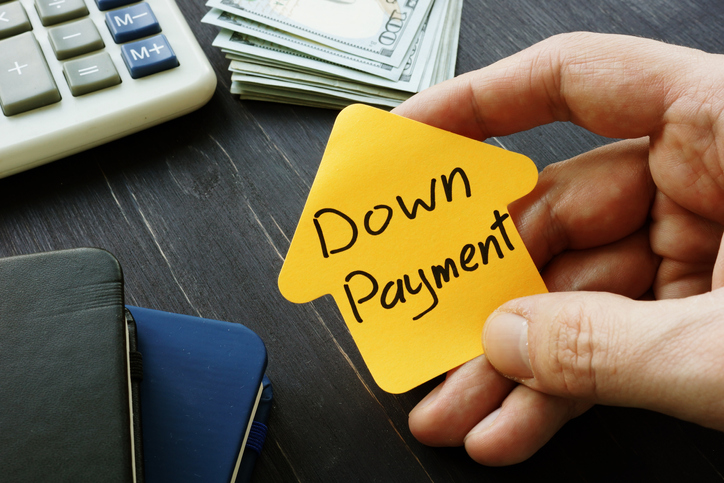
Saving for a down payment to buy a home is an important financial milestone. But doing so while paying rent and living expenses can be challenging, especially if you live in a city where those costs are significantly higher than the national median. Here are five ways you can save for a down payment while you’re still renting.
If you need help with your finances, a financial advisor can work with you to create a plan for your financial goals.
1. Open a Savings Account for Your Future Down Payment
One of the most effective strategies to kickstart your journey toward homeownership is to open a savings account specifically for your future down payment. Budgeting a small amount each month can help you reach that goal over time. However, you should look for an account that will offer you a higher interest rate than a traditional savings account. High-yield savings and money market accounts are popular alternatives as they typically earn more than the annual percentage yields (APYs).
One common way to budget for a down payment is to follow the 50/30/20 rule, which recommends spending 50% of your money on needs, 30% on wants and saving the remaining 20%. This can help you get a clear idea of your budget and map out how much you can spend and save for different needs and goals.
2. Cut Your Monthly Expenses
Cutting monthly expenses is another common way to find money that could be saved for your down payment. The first step towards reducing monthly expenses is identifying common areas of overspending. One example could include overspending on eating out and entertainment, which can cut into your savings goals.
Other common areas where people typically overspend include luxury goods, subscriptions and impulse purchases. Being aware of these spending habits can help you recognize and rectify potential financial pitfalls.
3. Get Out of Debt

Many individuals find themselves burdened by debt, which can be a major obstacle in saving for a down payment. Understanding how debt can limit your ability to save effectively is the first step towards financial awareness. And, depending on the size of your debt, you may have to pay it down substantially before you can shift your focus to other savings goals.
One common strategy to help you manage and repay debt, is the avalanche method, which prioritizes debt with the highest interest rate. So, if you have a $6,000 credit card debt with a 20% interest rate, a $2,000 personal loan with a 9% interest rate, and a $7,000 auto loan with a 6% interest rate, you would focus on paying off your credit card debt first.
Another debt repayment strategy would be to do the complete opposite: Focus on the debt with the smallest balance, while making minimum payments on other higher balances. This strategy can motivate you to pay down parts of your debt faster.
4. Earn Money From a Side Hustle
With more Americans working remotely, and industries offering more flexible hours and contract work, you may find another solution to save for a down payment by taking on a side hustle. This is essentially a secondary job or business that is separate from your primary source of income.
There are many side hustles available that cater to specific skill sets and interests. From freelance writing to tutoring or selling handmade products online, each option offers a unique opportunity to generate extra income while also developing new skills and in some cases even allowing you to pursue career interests and passions.
5. Apply for Down Payment Assistance Programs
As a first-time homebuyer, a down payment assistance program could be another path to achieving your homebuying milestone. These programs are designed to help first-time homebuyers, and individuals with financial constraints, afford the initial payment required to secure a mortgage.
There are state-specific programs, grants and even loans for specific professions. The California Housing Finance Agency, for example, offers low- and moderate-income homebuyers financing options and programs that focus on equity, while the Homes for Texas Heroes Program offers home loans and down payment assistance to public service professionals, such as teachers, police officers and firefighters.
Other Costs to Consider When Buying a Home
Buying a home is a significant financial decision and involves additional costs beyond the principal price. While the listing price of a house might be the first figure that catches your eye, it is only the tip of the iceberg when it comes to the total cost of homeownership. Here are some other costs that you need to pay attention to:
- Closing costs: These are the expenses over and above the price of the property that buyers and sellers incur when transferring ownership of the property. These typically include loan origination fees, title insurance, appraisal fees and escrow fees.
- Homeowner’s insurance: This is a form of property insurance that covers losses and damages to an individual’s house and to assets within the home.
- Property taxes: These are quarterly or annual taxes that homeowners pay to their local government and can vary widely depending on the location and value of the property.
- Home maintenance: These include repairs that are needed to maintain the home’s value and ensure a comfortable living environment. Common home maintenance tasks include HVAC servicing, gutter cleaning and roof repairs, among others.
Bottom Line

Saving for a down payment while renting can be challenging, but by taking a strategic approach can help you reach that goal over time. Opening a dedicated savings account, cutting down on monthly expenses, managing debt, exploring side hustles and applying for down payment assistance programs are five common strategies that can help you reach your goal faster.
Tips for Saving Money
- A financial advisor can help you create a financial plan to buy a home and reach other goals beyond. Finding a financial advisor doesn’t have to be hard. SmartAsset’s free tool matches you with up to three vetted financial advisors who serve your area, and you can have a free introductory call with your advisor matches to decide which one you feel is right for you. If you’re ready to find an advisor who can help you achieve your financial goals, get started now.
- Before you save money for a down payment you need to know how much house you can afford. Using a free home affordability calculator can help you do just that.
Photo credit: ©iStock.com/courtneyk, ©iStock.com/designer491, ©iStock.com/vitapix